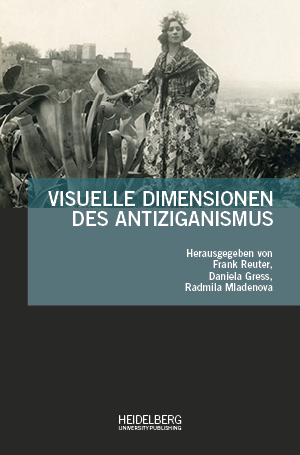Zitationsvorschlag
Lizenz (Kapitel)

Dieses Werk steht unter der Lizenz Creative Commons Namensnennung - Weitergabe unter gleichen Bedingungen 4.0 International.
Identifier (Buch)
Veröffentlicht
Ich höre nicht, was ich nicht weiß. Der Dokumentarfilm "Die Zigeuner" und sein Nachleben
Zusammenfassung Moderne Konventionen des “Zigeuner”-Bildes(s) entstanden in der zweiten Hälfte des 19. Jahrhunderts und haben sich seither nicht wesentlich verändert. Die Vorstellung von Roma als notwendigen Außenseitern der westlichen Zivilisation steht nicht für sich allein: Texte, Filme, Ausstellungen neigen alle dazu, Roma als eine Gruppe von Menschen zu betrachten, die von Natur aus anders sind und außerhalb der Gesellschaft stehen. Zeitgenössische Studien im Bereich der Romani-Studien und des Antiziganismus erkennen zunehmend die Wichtigkeit, das bestehende visuell Vorherrschende und die darin eingeschriebenen kolonialen Beziehungen zu dekonstruieren und den Platz der Roma in der Geschichte wiederherzustellen, ferner die Defizite eines grundsätzlichen Verständnisses von „den Zigeunern“ aufzuzeigen und ein eher kontextuelles Verständnis dessen zu artikulieren, was es bedeutet, Roma zu sein.
Das Bedürfnis nach einer glaubwürdigen Darstellung der Roma in den Medien entstand im sozialistischen Ungarn in den 1960er Jahren. Dieser Artikel analysiert die Diskrepanz zwischen Wissen und Anerkennung sowie die Fallstricke der Emanzipation aus ethnographischen und soziologischen Ansätzen. Im Mittelpunkt der Untersuchung steht die Erinnerung an den nationalsozialistischen Völkermord an den Roma in Ungarn, die als unsichtbare und unhörbare Gewissheit schon früh im öffentlichen Diskurs präsent war, wenn auch nur in undurchsichtiger Form. Dennoch erschien der Völkermord wie ein Bild des „optischen Unbewussten“, das bis zum Regimewechsel 1989 nie ins Zentrum des Diskurses rückte.






